COOPERATION MODEL
ARTIFICIAL INTELLIGENCE
PRODUCT ENGINEERING
DevOps & Cloud
LOW-CODE/NO-CODE DEVELOPMENT
FRONTEND DEVELOPMENT
CLOUD DEVELOPMENT
MOBILE APP DEVELOPMENT
LOW CODE/ NO CODE DEVELOPMENT
EMERGING TECHNOLOGIES







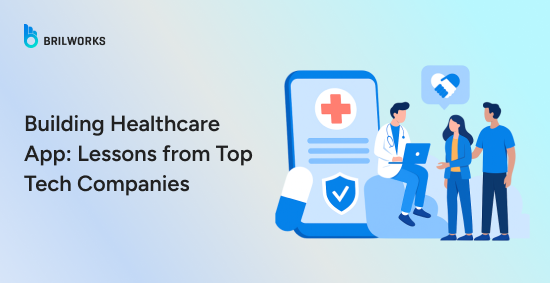
The healthcare industry has been held back for too long by legacy systems with old-fashioned interfaces and isolated data. However, major cloud providers like AWS, Microsoft, and Google redefined what modern healthcare mobile apps could achieve.
Meanwhile, cloud technology makes it possible to build healthcare apps without worrying about infrastructure needs. In addition, AI in healthcare is emerging as a popular technology, making high-end software development accessible even to those from non-technical backgrounds.
Modernize your healthcare systems with Brilworks. From cloud-native apps to AI-driven insights, we craft solutions that improve efficiency, protect patient data, and drive measurable results. Explore our healthcare development services today.
Despite the global healthcare market being projected at more than USD 20 trillion, very little modern AI technology is being fully utilized. Organizations often explore healthcare app development services, for instance, to integrate systems and improve data flow without requiring an overhaul of existing software.
Putting old software on a cloud server is a temporary fix, not a solution. For example, Amazon didn’t just move its retail site to a new server; it built AWS, the most significant cloud infrastructure on the planet. In healthcare, this means utilizing specialized AWS healthcare solutions, such as HealthLake or Microsoft Cloud for Healthcare, which are specifically designed for handling health information.
Instead of “lifting and shifting” old software, your new app should be cloud-native. You can choose Node.js for healthcare apps, which can also help your backend scale efficiently while maintaining performance.
This means we must build it from scratch, utilizing the cloud’s security, compliance, and scalability features to their fullest extent. As a result, your solution will handle massive patient loads, integrate easily with other services, and be flexible enough so it can adapt to new regulations without costly overhauls.
With evolving standards like HL7 FHIR and GDPR-like mandates, cloud-native systems can adapt instantly without replatforming. Legacy systems cannot keep pace with this velocity of change.
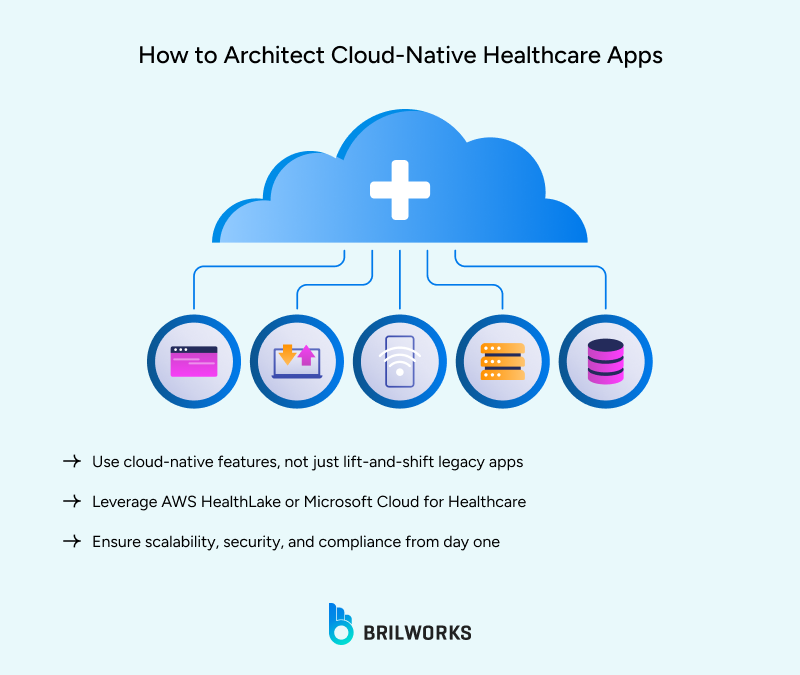
Organizations like Google and Microsoft understand that data is the backbone of today’s healthcare. Therefore, their work in the healthcare sector has focused on breaking down data silos with standards like FHIR and enabling data to flow securely and rapidly across systems.
Your application should not run in isolation. It should be developed with interoperability as part of its DNA. It should easily connect to EHRs, different healthcare systems, or clinical applications that generate data. As a result, information moves without friction across the ecosystem, making the system more affordable and supporting better outcomes.
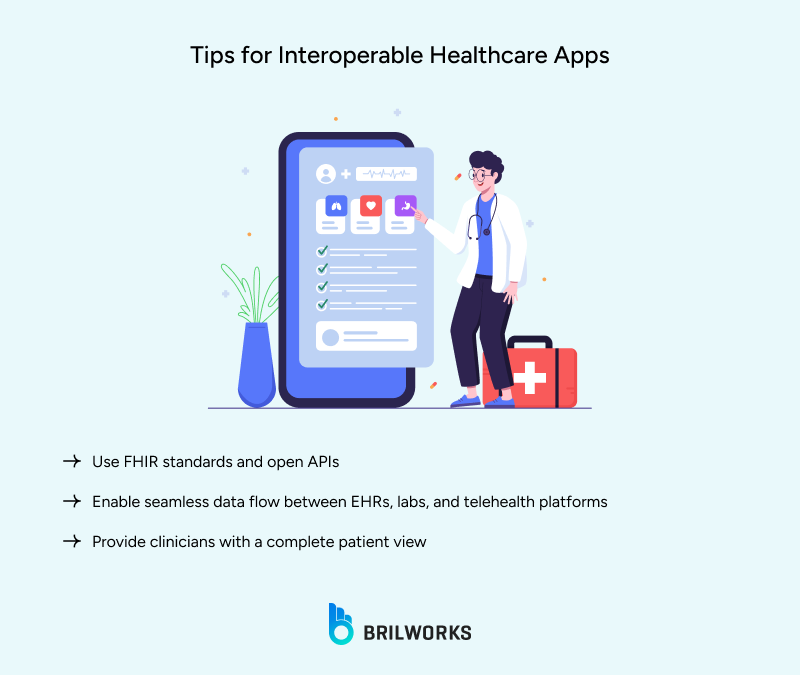
Microsoft’s DAX Copilot didn’t try to fix the entire patient experience. Instead, it solved administrative burnout from clinical documentation. On average, clinicians spend more time on EHR and desk work than on direct patient care, with 49% of their day spent in the EHR, versus only 27% with patients. They focused on building a service that truly made a difference, with a clear return on investment (ROI).
If you are developing an app, don’t try to do everything at once. Your end-users already have several specific pain points. Identify a single, critical workflow that is costing your organization time and money. Then, develop a targeted app that solves that problem exceptionally well, proving its value before you expand.
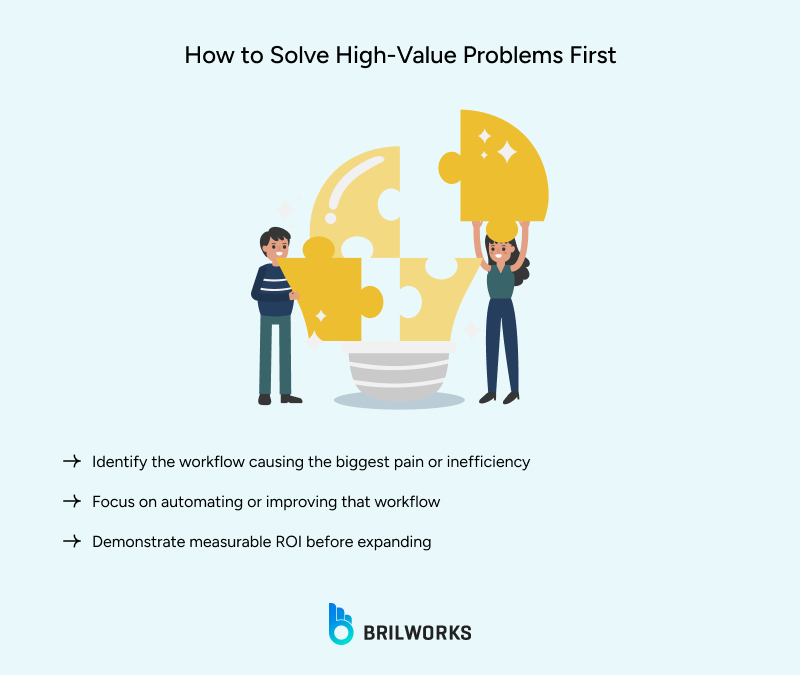
Tech giants build user-friendly consumer apps because they are crafted to fit naturally into how people use technology today. Take an example of some day-to-day apps such as Apple Health, Google Health, etc..These apps provide users with an option to view their secured medical records from participating health systems.
Similarly, clinical workflows are built in and hard to change. Before you write a single line of code, immerse yourself in the day-to-day life of your end-users.
A beautiful UI is pointless if it requires extra clicks, forces users to re-enter data, or pulls them out of their everyday workflow. Therefore, your app should be a natural extension of how staff already work. In particular, well-designed healthcare mobile apps streamline tasks without adding friction.
The Change Healthcare and Flo app incidents are real-world reminders that security failures can have catastrophic consequences. Hence, it is essential to incorporate security and compliance from day one. Cloud service providers offer built-in healthcare compliance services, making it easier to stay within regulatory requirements.
Moreover, security and compliance are not post-launch checklists. Every technical decision must consider HIPAA, GDPR, and other regulations. As a result, apps are more trusted, reduce risk, and protect sensitive patient data.
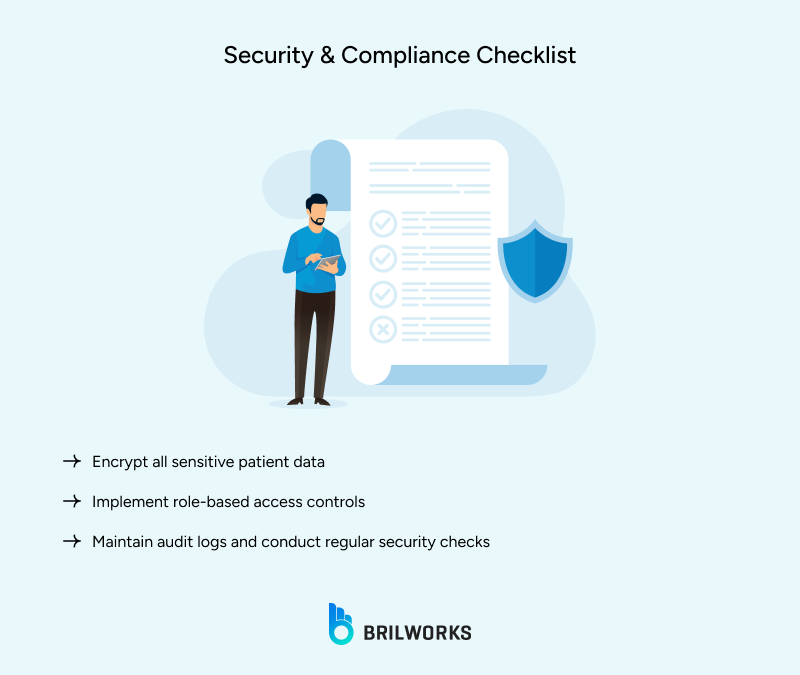
Google and Microsoft are applying AI to complex problems like diagnostics and documentation. However, they recognize the ethical implications. Millions of clinicians have stories about how these tools are helping them in their day-to-day tasks.
For example, deploying AI for predictive analytics, administrative automation, or clinical decision support can reduce workloads and improve outcomes. Importantly, all AI-driven healthcare tools must be clinically validated, transparent in function, and designed to support human judgment.
Apple’s HealthKit is a platform that allows various apps to connect and share data, creating a rich health ecosystem. The app you build today should serve as the foundation for future projects. Design a modular architecture that allows you to add new features or integrate with other tools over time.
In addition, a platform approach maximizes long-term ROI and saves your organization from starting from scratch whenever needs evolve. As a result, your app becomes more adaptable and scalable.
Top tech firms build trust by validating their solutions and publishing their findings. In addition, they partner with health systems to show real-world clinical and operational improvements.
Your institutional buyers are driven by ROI and verifiable results. For instance, backing your app with clear data, case studies, clinical validation reports, or ROI calculators shows that your app not only works but delivers tangible value by saving money and time or improving patient outcomes.
Amazon’s retail experience succeeds because it is intuitive and straightforward. Similarly, in healthcare, a brilliant product is useless if no one can or will use it. Think of the “go-live” phase as the starting point.
Therefore, build your app with intuitive onboarding. Use tools that simplify implementation, such as authentication and built-in migration assistance. As a result, a successful app is not just well-coded; it is well-adopted by end-users.
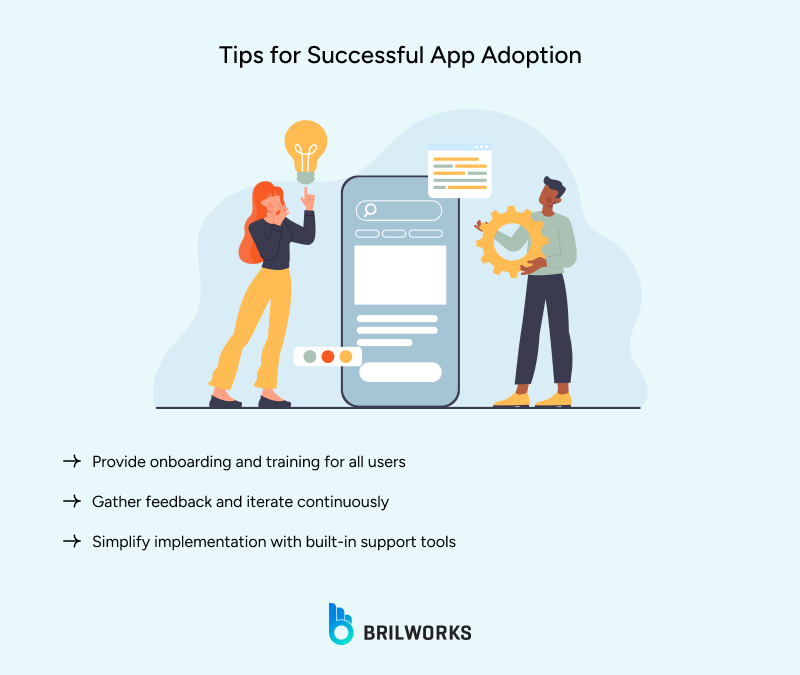
Tech giants are masters of pivoting, but their ultimate direction remains steadfast. Consequently, Amazon and Google have re-evaluated their direct healthcare plays but continue to pursue their mission of applying technology to improve health.
The healthcare landscape is constantly shifting. Hence, remain agile and willing to adapt your roadmap based on market feedback. However, never lose sight of your core mission: to improve patient care and reduce operational friction.
See Also: The Complete Guide To Modernizing Legacy Healthcare Systems
Looking back at the ten lessons, it’s clear that building effective healthcare apps is more than just coding. With cloud-native design, you can create a scalable foundation, which is crucial for developing complex, functional applications.
The key takeaway from this article is that, instead of doing it all at once, build something that solves specific problems, then make changes iteratively as needs grow. And the most important thing: for healthcare service providers, security, compliance, and responsible use of AI aren’t optional.
If you are looking to turn these lessons into reality, Brilworks can help. We work closely with small to medium-sized healthcare organizations to design, develop, and scale apps.
We have developed numerous healthcare solutions, ranging from mobile patient portals and EHR-compliant systems to AI-powered healthcare systems that enable better predictive analytics. We house a team of vetted developers versed in modern technologies to build apps that meet evolving compliance and user needs.
Why partner with us?
Get In Touch
Contact us for your software development requirements
Get In Touch
Contact us for your software development requirements